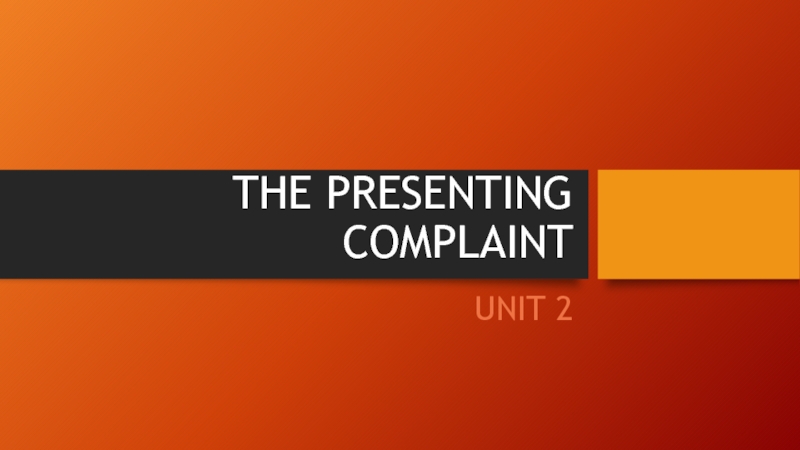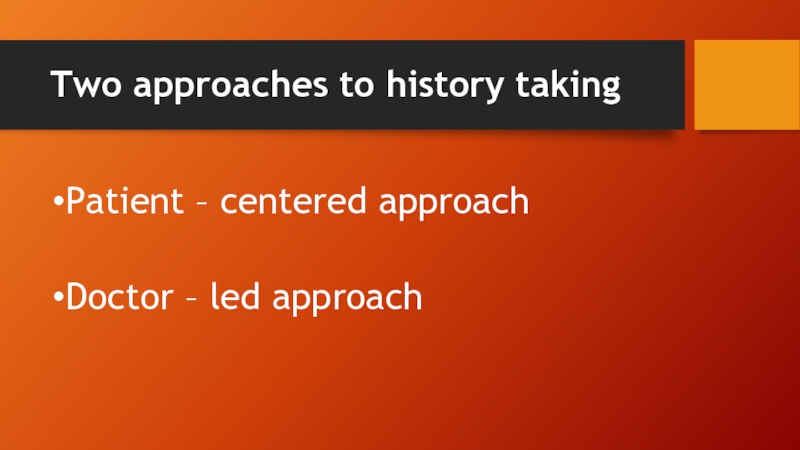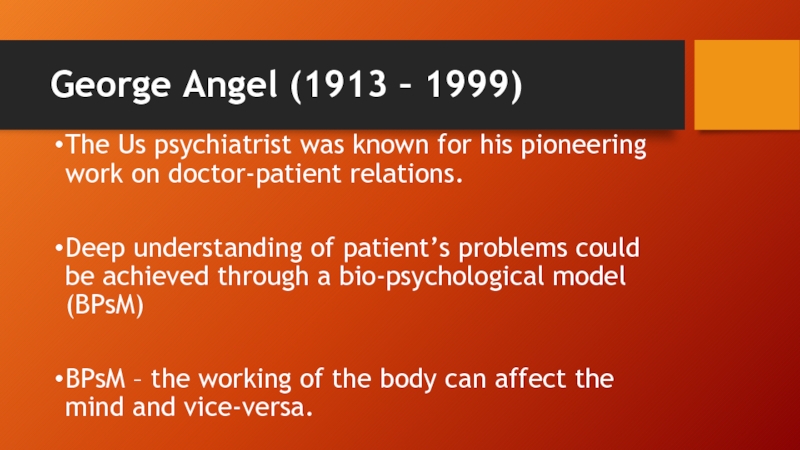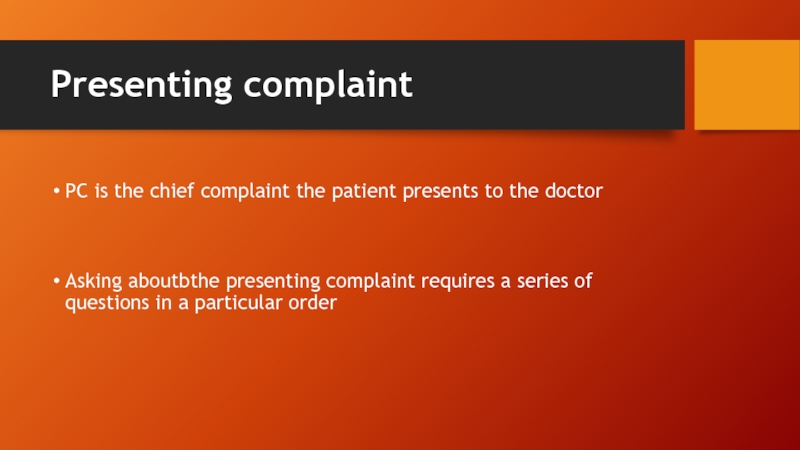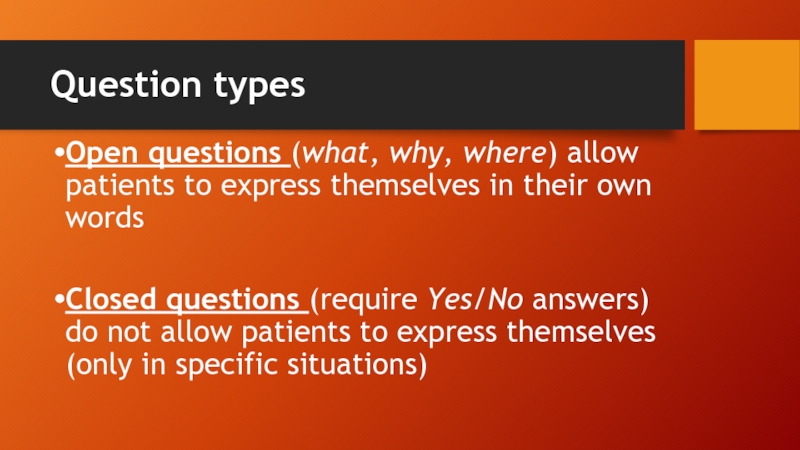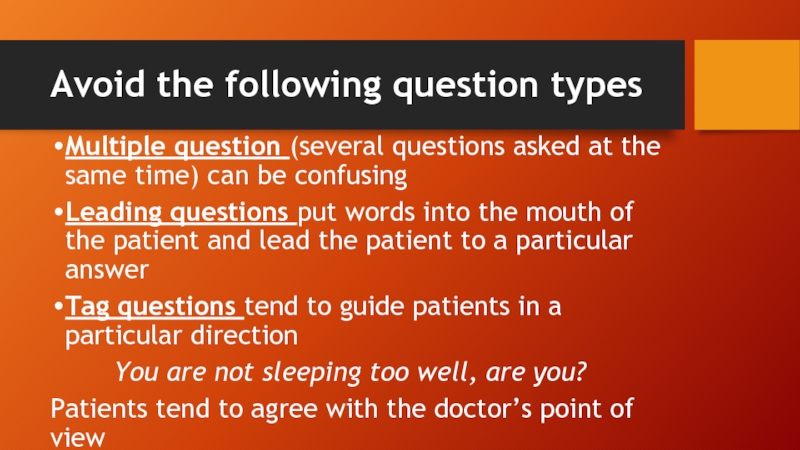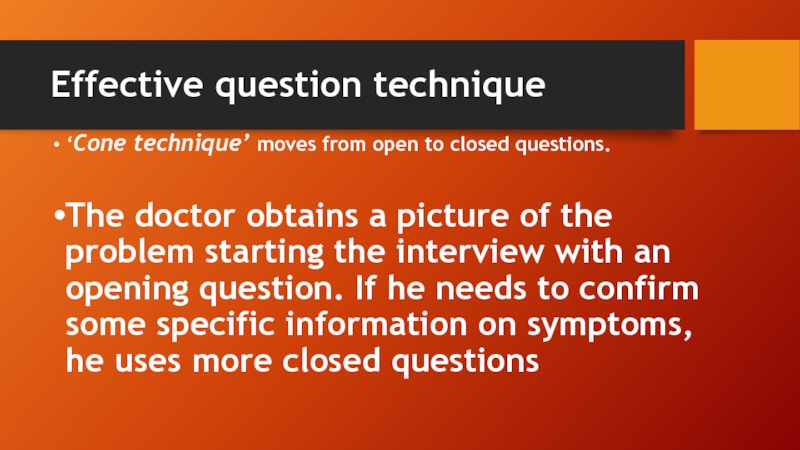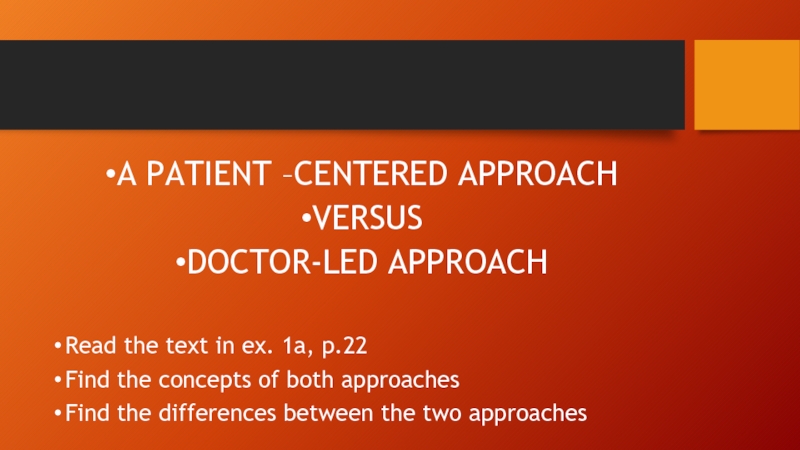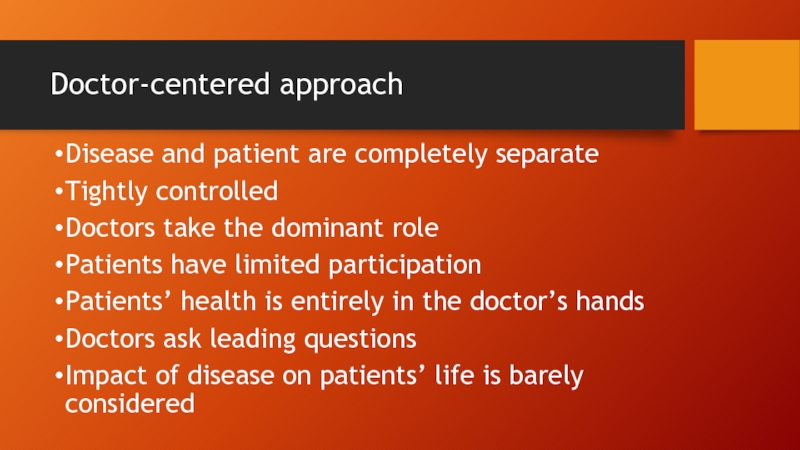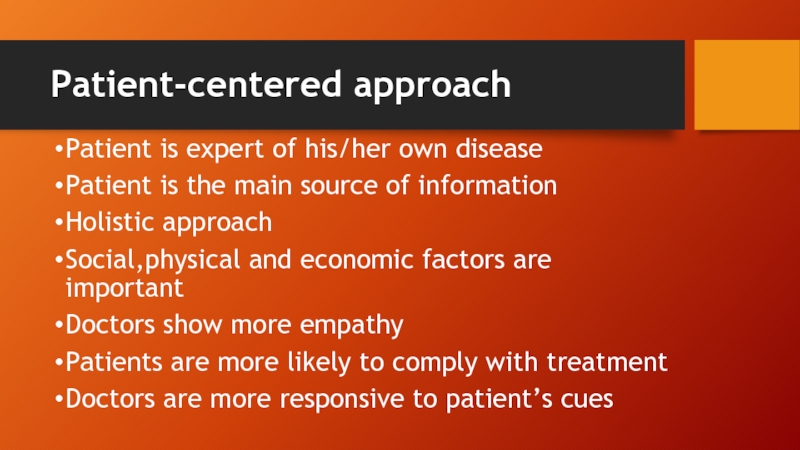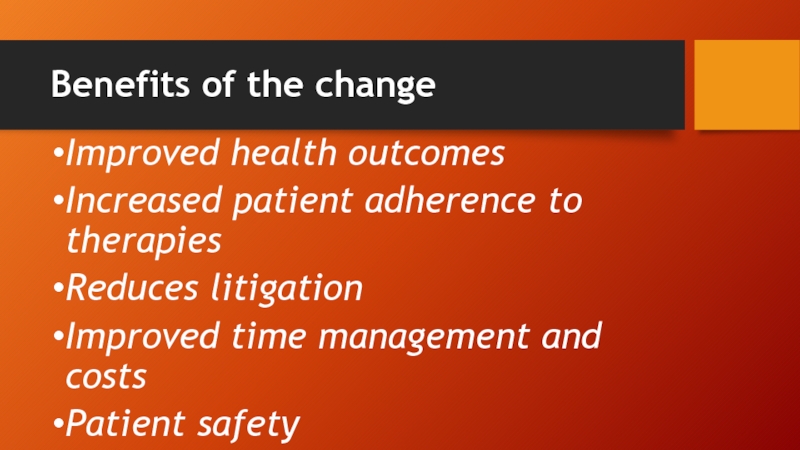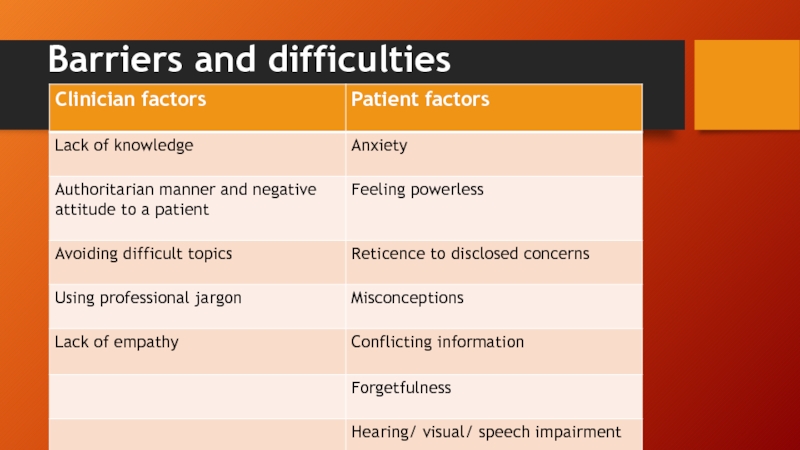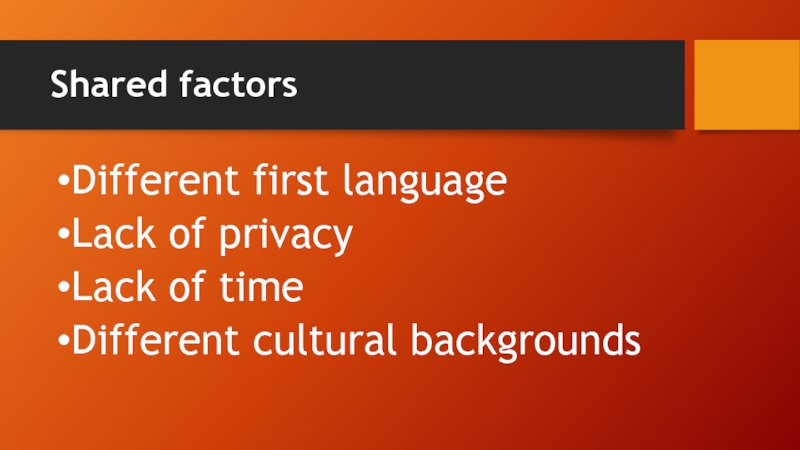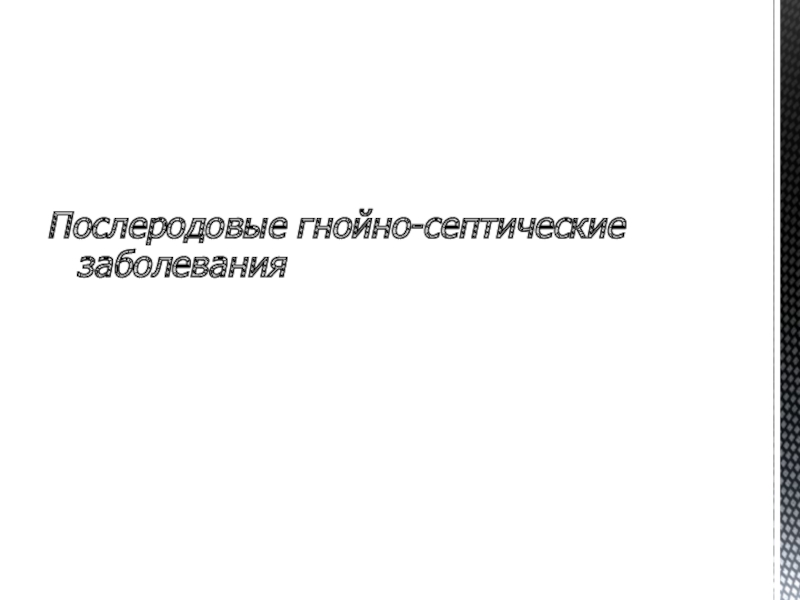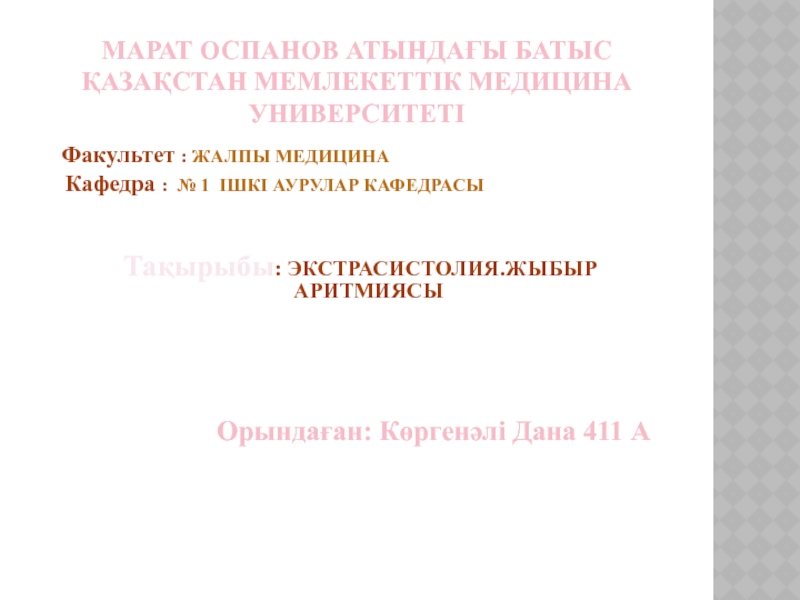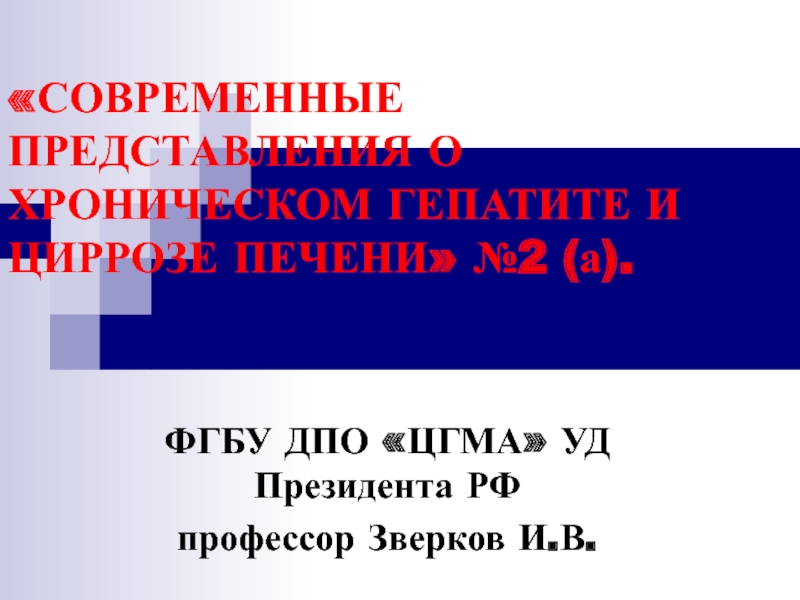- Главная
- Разное
- Дизайн
- Бизнес и предпринимательство
- Аналитика
- Образование
- Развлечения
- Красота и здоровье
- Финансы
- Государство
- Путешествия
- Спорт
- Недвижимость
- Армия
- Графика
- Культурология
- Еда и кулинария
- Лингвистика
- Английский язык
- Астрономия
- Алгебра
- Биология
- География
- Детские презентации
- Информатика
- История
- Литература
- Маркетинг
- Математика
- Медицина
- Менеджмент
- Музыка
- МХК
- Немецкий язык
- ОБЖ
- Обществознание
- Окружающий мир
- Педагогика
- Русский язык
- Технология
- Физика
- Философия
- Химия
- Шаблоны, картинки для презентаций
- Экология
- Экономика
- Юриспруденция
The presenting complaint. Two approaches to history taking презентация
Содержание
- 1. The presenting complaint. Two approaches to history taking
- 2. Two approaches to history taking Patient – centered approach Doctor – led approach
- 3. George Angel (1913 – 1999) The Us
- 4. Presenting complaint PC is the chief
- 5. Question types Open questions (what, why, where)
- 6. Avoid the following question types Multiple question
- 7. Effective question technique ‘Cone technique’ moves from
- 8. A PATIENT –CENTERED APPROACH VERSUS
- 9. Doctor-centered approach Disease and patient are completely
- 10. Patient-centered approach Patient is expert of his/her
- 11. Reasons for the change Patients expect information
- 12. Benefits of the change Improved health outcomes
- 13. Barriers and difficulties
- 14. Shared factors Different first language Lack of privacy Lack of time Different cultural backgrounds
Слайд 3George Angel (1913 – 1999)
The Us psychiatrist was known for his
pioneering work on doctor-patient relations.
Deep understanding of patient’s problems could be achieved through a bio-psychological model (BPsM)
BPsM – the working of the body can affect the mind and vice-versa.
Deep understanding of patient’s problems could be achieved through a bio-psychological model (BPsM)
BPsM – the working of the body can affect the mind and vice-versa.
Слайд 4Presenting complaint
PC is the chief complaint the patient presents to the
doctor
Asking aboutbthe presenting complaint requires a series of questions in a particular order
Asking aboutbthe presenting complaint requires a series of questions in a particular order
Слайд 5Question types
Open questions (what, why, where) allow patients to express themselves
in their own words
Closed questions (require Yes/No answers) do not allow patients to express themselves (only in specific situations)
Closed questions (require Yes/No answers) do not allow patients to express themselves (only in specific situations)
Слайд 6Avoid the following question types
Multiple question (several questions asked at the
same time) can be confusing
Leading questions put words into the mouth of the patient and lead the patient to a particular answer
Tag questions tend to guide patients in a particular direction
You are not sleeping too well, are you?
Patients tend to agree with the doctor’s point of view
Leading questions put words into the mouth of the patient and lead the patient to a particular answer
Tag questions tend to guide patients in a particular direction
You are not sleeping too well, are you?
Patients tend to agree with the doctor’s point of view
Слайд 7Effective question technique
‘Cone technique’ moves from open to closed questions.
The doctor
obtains a picture of the problem starting the interview with an opening question. If he needs to confirm some specific information on symptoms, he uses more closed questions
Слайд 8
A PATIENT –CENTERED APPROACH
VERSUS
DOCTOR-LED APPROACH
Read the text in ex.
1a, p.22
Find the concepts of both approaches
Find the differences between the two approaches
Find the concepts of both approaches
Find the differences between the two approaches
Слайд 9Doctor-centered approach
Disease and patient are completely separate
Tightly controlled
Doctors take the dominant
role
Patients have limited participation
Patients’ health is entirely in the doctor’s hands
Doctors ask leading questions
Impact of disease on patients’ life is barely considered
Patients have limited participation
Patients’ health is entirely in the doctor’s hands
Doctors ask leading questions
Impact of disease on patients’ life is barely considered
Слайд 10Patient-centered approach
Patient is expert of his/her own disease
Patient is the main
source of information
Holistic approach
Social,physical and economic factors are important
Doctors show more empathy
Patients are more likely to comply with treatment
Doctors are more responsive to patient’s cues
Holistic approach
Social,physical and economic factors are important
Doctors show more empathy
Patients are more likely to comply with treatment
Doctors are more responsive to patient’s cues
Слайд 11Reasons for the change
Patients expect information about their condition and treatment
and want doctors to take their opinions into account. They like to be involved.
Patients expect humanity and empathy from their doctors as well as competence.
Patients expect humanity and empathy from their doctors as well as competence.
Слайд 12Benefits of the change
Improved health outcomes
Increased patient adherence to therapies
Reduces litigation
Improved
time management and costs
Patient safety
Patient safety
